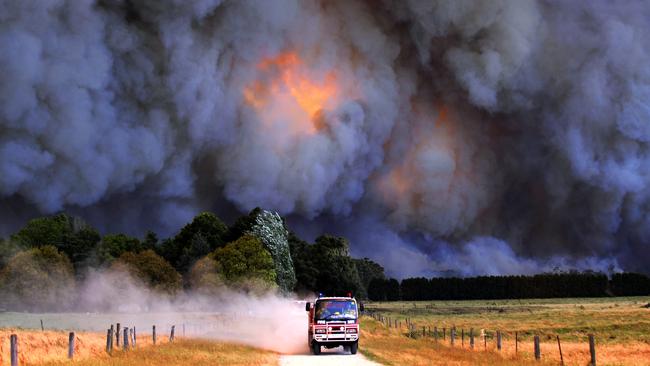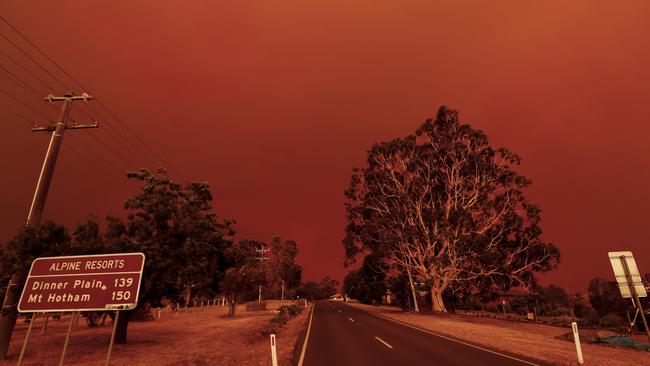Fireys to battle savage bushfires more often as fire danger days set to spike
Victoria’s bushfire season will become longer and more dangerous, with these areas set to experience a sharp increase in high-risk fire danger days.
News
Don't miss out on the headlines from News. Followed categories will be added to My News.
Firefighters could be battling to contain Black Saturday-like bushfires across Victoria every six months by the end of the century if temperatures continue to rise.
New research conducted by the Country Fire Authority (CFA) with Monash University found that man-made pollution would cause the number of extreme fire danger days in Victoria to double over the next 80 years.
CFA research manager and study co-author Dr Sarah Harris said Victoria’s fire season will become longer and more dangerous without drastic intervention to drive temperatures down.
“There is likely to be a 10 to 20 per cent increase in fire weather across the state,” Dr Harris said.
“Temperature changes are the greatest driver of fire weather changes,” she said.

The report revealed rising surface temperatures and stronger dry cold fronts could ignite savage blazes, such as the 2009 Black Saturday tragedy and the 1983 Ash Wednesday Fires, up to twice a year by 2100.
Projections also indicated a 10 to 20 per cent jump in extreme forest fire danger in the state’s northwest and east, where blazes destroyed more than 18 million hectares of land and killed 34 people during the 2019-20 fire season.
Dr Harris said: “We looked at these very high fire weather days for the future and we found them almost doubling in the northwest, a doubling in central areas and a tripling in the east of the state”.
By 2100, Walpeup in northwest Victoria will experience 100 “very high” fire risk days, up from 60.
Melbourne will also rise from an average of 12.5 to 22.5 very high-risk days.

CFA deputy chief officer Alen Slijepcevic said Victoria had been well-equipped to deal with disastrous eastern Victorian fires in 2019 and 2020.
But he said the focus needed to shift to prevention because more high-fire-danger days mean a fire season could spiral out of control more easily, straining firefighters’ resources.
“One bad day can make or break the fire season,” Mr Slijepcevic said.
“We’ve had quite significant seasons like Black Saturday, and we’re still seeing the impact now. Any increase of this will just focus more of a workload for fire managers.”
Mr Slijepcevic said Victoria will become more reliant on external support to keep future blazes at bay if temperatures do not drop over the coming decades.
“We’ve had a large influx of people from other jurisdictions coming to help us control the fires, being interstate or coming from international, Canada, America, New Zealand and I think that will continue into the future,” he said.
“The problem is too big for us. We cannot achieve what we need to do in isolation.”




